England truly has so much to offer, and there are plenty of amazing places within a couple of hours of London that showcase just how beautiful and diverse this country is. And best of all you don’t need a car – there are loads of places that you can easily get to by public transport.
Make sure you download the Trainline app – it will make planning your journey a breeze. Not only will it bring up all stations and all rail companies (so you will literally see all options) – you’ll also be able to check for any planned engineering works or disruptions. You can even see congestion and how full individual carriages are!
My top tip though would be not to venture anywhere too far away – e.g. Scotland! Although Edinburgh is doable as a day trip by train (4.5 hours each way), the required early start and very late finish (maybe even a sleeper train!) will leave you exhausted, and you won’t get the most out of the experience. Maybe save anywhere with a travel time of more than 2.5 hours each way for a weekend getaway! I genuinely suggest sticking to England for day trips.
Disclaimer: Hi! this post may contain affiliate links which will take you to online retailers that sell products and services. If you click on one and buy something, I may earn a commission, see my Affiliate Disclosure for more details.
But fear not, many top places to visit are closer to London than you may think.
Here are my most recommended day trips from London by train…
Oxford

When people say they only have time to do one day trip from London, I usually recommend Oxford. Home to the oldest university in the English-speaking world (only the University of Bologna and the University of Paris are older), it is a town steeped in tradition, and being one of the few places not to have been bombed at all during the Second World War, a rare opportunity to see genuine old buildings (as opposed to rebuilds).
One of the best things about Oxford is that you can set off from the train station on foot, and everything – from the most famous colleges, to historic pubs, to the many free museums – are within walking distance. Alice in Wonderland, the Lord of the Rings, and the Chronicles of Narnia are just some of the great works of literature that were born in Oxford.
A lot of Inspector Morse and even Harry Potter were filmed in Oxford – so it’s a great place to visit to see quintessentially English buildings, as well as some familiar film locations. The town really has something for everyone – and for that reason, my recommendations for Oxford will be a bit more extensive that the other day trips on my list!
Getting There
Direct trains run from Paddington Station every half hour, and the total journey time is less than one hour.
Things to Do
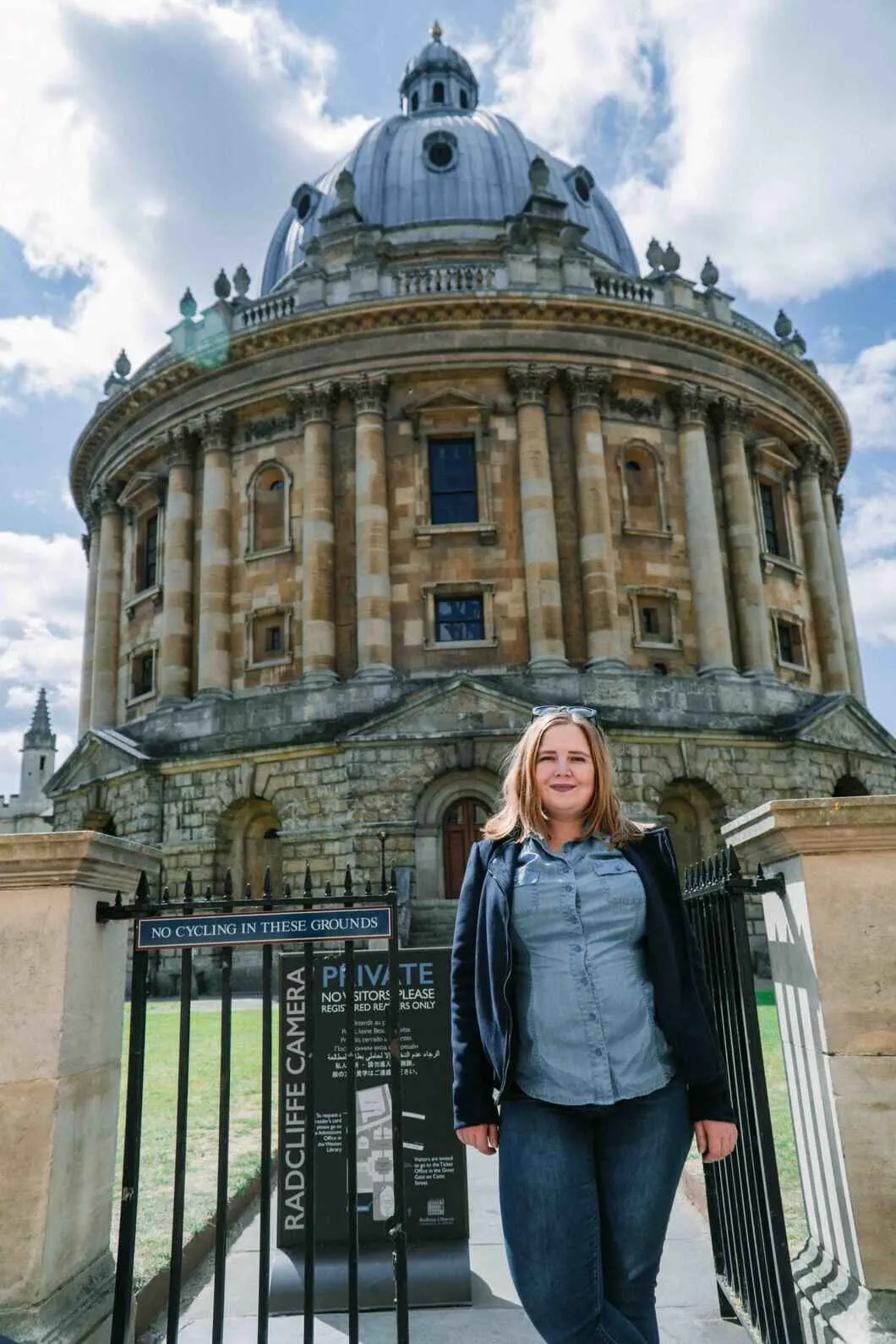
I’d definitely recommend doing a walking tour of Oxford, not only to get your bearings, but also to hear the unique history of this magical place. You won’t be able to get a true appreciation of what you’re looking at, without a walking tour! Footprints offer a 2-hour free (tips-based) walking tour, departing regularly throughout the day from Broad Street. The guides are Oxford students, so you’ll also get a unique insight of both the university as well as college life from the perspective of someone who really knows!
As for the colleges, not all of them are open to the public, and those that are, are sometimes closed for exams and special events. If there is a specific college that you are interested in visiting, I would urge you to phone in advance and check that they will be open for sightseeing on the day that you are visiting.
If you don’t have a college in mind, then I would highly recommend Christ Church – it is the largest, grandest, and most impressive. The dining hall is also the famous “Harry Potter dining hall” – so a must for fans!
Tickets are much more expensive than other colleges (£15 at the time of this article’s publication), but in my opinion, you do get what you pay for – including an audio tour, which is not offered by any of the other colleges I am recommending.
If Christ Church is outside your budget, you can visit either Balliol College or Trinity College for only a few pound. Alternatively, Worcester College is free to visit the impressive grounds as well as the college chapel (but you will not have access to any other buildings). Tickets for the colleges can be purchased at the entrances to them, when they are open.
Alternatively, also worth a visit is the Bodleian, one of the oldest libraries in Europe. It is a working library, so visitation is only possible via guided tour. Again, tickets are available at the entrance, when the library is open to visitors.
Oxford is also home to a number of free museums, including the Ashmolean, which believe it or not, is older than the British Museum (which claims to be the oldest public museum in the world – important to note that the Ashmolean is owned by the university).
The collection ranges from ancient artefacts such as Egyptian mummies, to contemporary art. Some of the items from the original 17th Century collection are still on display, including a lantern thought to have been used by Guy Fawkes during the Gunpowder Plot of 1605, Oliver Cromwell’s death mask, and the “posy rings” thought to have inspired the “one ring” in J.R.R. Tolkien’s Lord of the Rings. The Ashmolean – along with other museums – is free to visit, but donations are encouraged. The museums are typically open until 5pm, and closed on Mondays.
You can also get a great (free) view of the “city of dreaming spires” from the cafe on the top of the Ashmolean. Other great (cheap) views can be found atop Carfax Tower, Oxford Castle’s motte/mound, or the tower of the University Church of St Mary the Virgin, in Radcliffe Square.
A visit to Oxford wouldn’t be complete without a visit to some of the many historic pubs. My personal favourites are the Turf Tavern, thought to be the oldest pub in Oxford, in part dating back to the 12th Century.
A favourite haunt of the Harry Potter cast and crew, the Turf was also where former Australian Prime Minister Bob Hawke broke the Guinness World Record for downing a yard-glass of beer in 11 seconds, and where former US President Bill Clinton famously “puffed but did not inhale” a particular substance while he was a student at Oxford. Another favourite is the Eagle and Child – notorious for being the meeting place of the informal literary group the Inklings, including Tolkien and C.S. Lewis.
I’m often asked if which is better to visit: Oxford or Cambridge. In my opinion, it’s far better to visit Oxford – you can easily walk into the town from the train station (Cambridge will require a bus ride or taxi), it’s smaller (so easier to explore), and older. Oxford just has a feel to it that you don’t get from Cambridge, but both are fabulous places.
Bath

Only 80 minutes from London, Bath is another university town steeped in history. Named after its Roman-built baths, it is thought to be the only natural thermal spa in England, and the city was given World Heritage site status in 1987. Although some bombings happened here during the war, there are plenty of old buildings and cobbled streets that survive.
Getting There
Trains run from London Paddington to Bath Spa every hour.
Things to Do
Bath is a great city just to wander around yourself, armed with some basic history in a guidebook. Don’t spend too long doing this, as there are 2-3 other things that will definitely fill up your day…
The Roman Baths are understandably the main attraction in Bath. A well-preserved and hugely immersive museum, you’ll experience some of the fascinating Roman history of England. You can’t actually immerse yourself in the water here, but if you are looking for a spa experience, be sure to check out nearby Thermae.
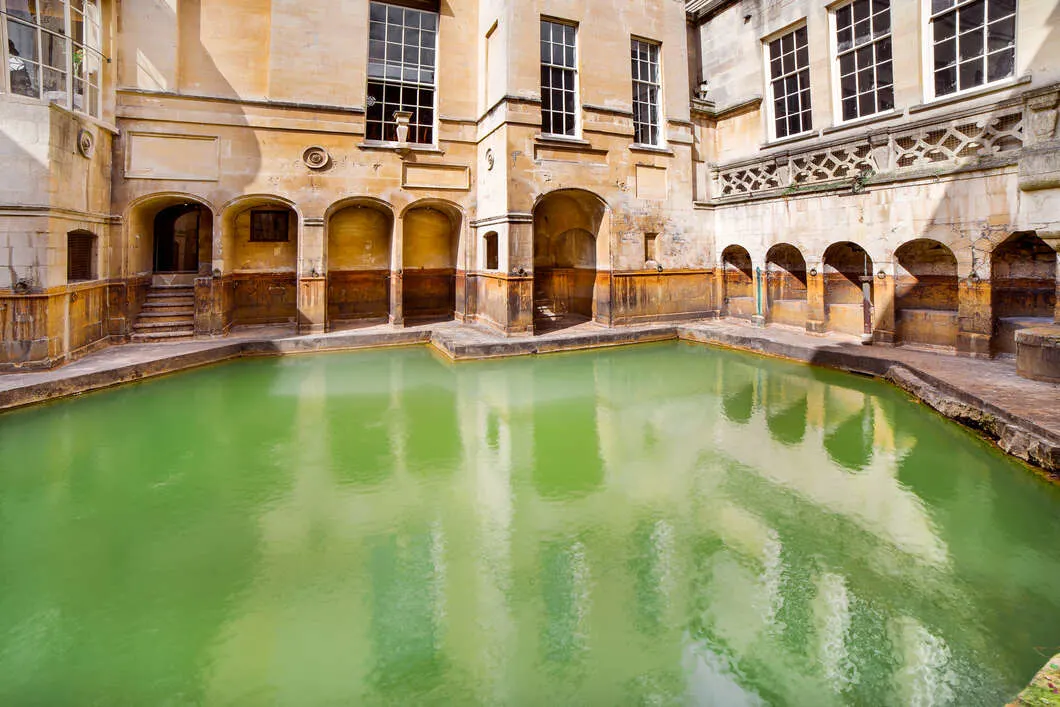
Britain’s only operational natural thermal spa, it’s one of my favourites anywhere in the world. You can either pay for a 2-hour access to the facilities (includes robe and slippers), various treatments, or one of the great-value packages online. Most packages include a meal (vegans are catered for).
If you’re a Jane Austen fan, Bath should definitely be on your list to visit. In addition to the Jane Austen Centre, Visit Bath’s website has some great information for fan must-do’s in the city.
An unusual museum to visit in Bath is the Herschel Museum of Astronomy, and I’d highly recommend it. The home of William and Caroline Herschel, you can stand in the garden on the exact spot where the planet Uranus was discovered – first sighted through telescope in 1781.
If time permits and you’re very interested in doing it, you could also spend half of your day visiting Stonehenge. There are plenty of tour operators that offer excursions there from Bath city centre. It’s really difficult to visit Stonehenge using public transport, so it is a place I would always recommend booking on to an organised tour.
There are Stonehenge and Bath combined day trips via coach that depart London (Golden Tours and Premium Tours are just a couple of companies that offer these trips), but it’s also perfectly easy to book one of the many options departing Bath – and this would give you more flexibility in terms of your Bath sightseeing schedule.
However you do it, I would not recommend Stonehenge as a standalone day trip from London – you’ll spend more time on the coach than at the site, and if you’re going to travel that far, it is definitely worth combining the trip with Bath. Bath really has a lot of offer on its own for a full day, so Stonehenge might be better to include in a weekend trip – but for those who only have a day, it is definitely doable.
Stratford-Upon-Avon
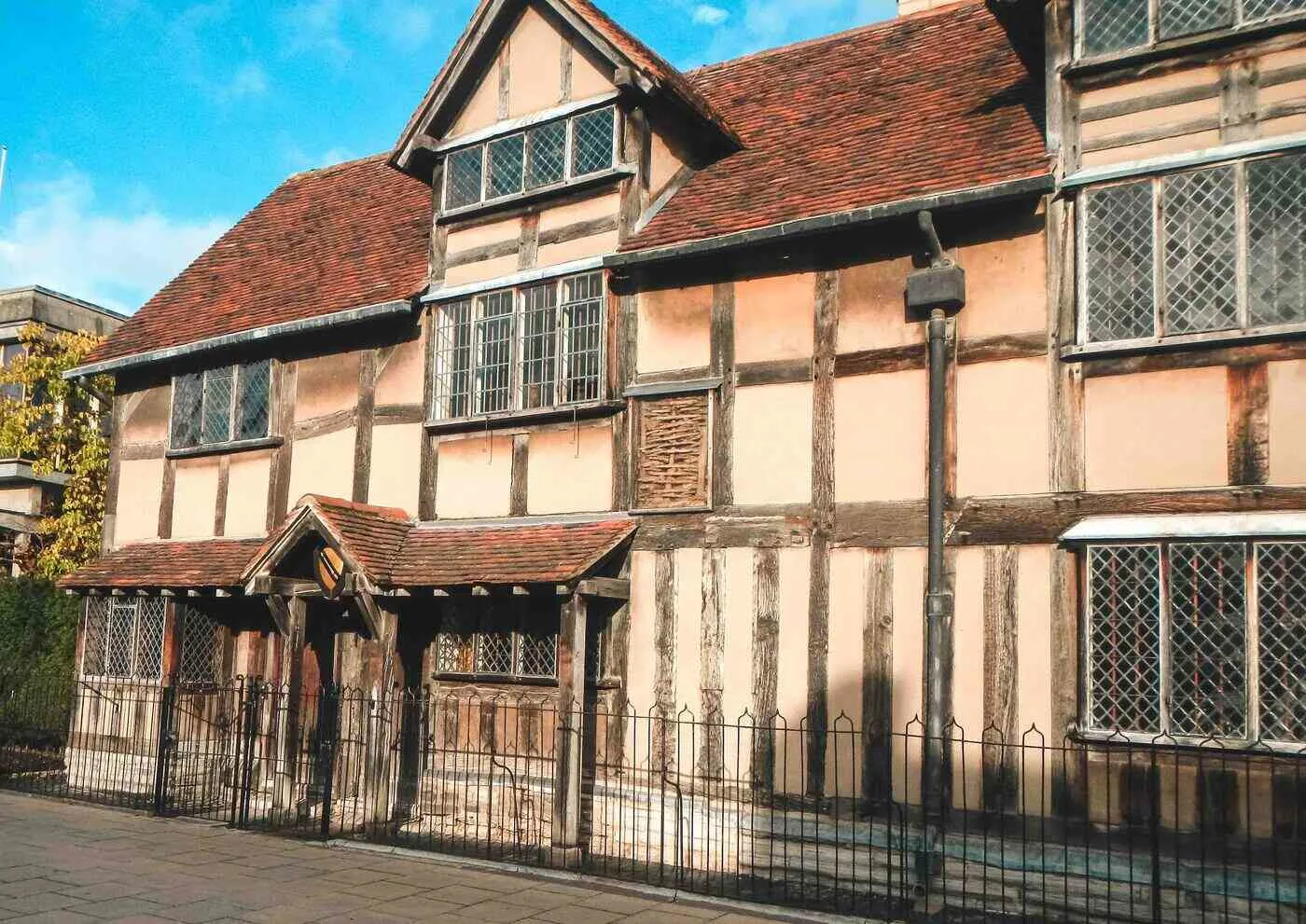
Shakespeare’s hometown is definitely a worthwhile jaunt for fans of the bard. With an average journey time each way of 2 hours 20 minutes, it is a day trip farther away than the other rail journeys I am recommending – but definitely worth it. There are some direct fast trains that take just over 2 hours.
Getting There
Trains run from both London Euston and London Marylebone, and most require at least one change. Chiltern Railways do offer a direct service from Marylebone.
Things to Do
I absolutely recommend doing the 2-hour walking tour with Stratford Town Walk – only £7 for adults; it’s incredible value for money. Note that the walk only happens at 11am daily (there is a later walk at 2pm on Saturdays, but to be honest you’re best to start your day with the walk) – so try to get a train that will get you into Stratford by 10.30am at the latest!
There are a number of sites in and near the town that are relevant to Shakespeare – including his 5 “homes”. The Shakespeare Birthplace Trust offers a pass that will give you access to all 5 sites (for 12 months, if you’re keen to become a regular visitor!), and this is the best value for money, at only £23 for adults (comparably just to visit his birthplace, it is £18).
The house where Shakespeare was born, as well as Anne Hathaway’s cottage, are my top two must-do’s. Note that you won’t be able to walk to Anne Hathaway’s cottage – you’ll need to get a local taxi, but it’s definitely worth it. You’ll also need to get a taxi if you wish to visit the farm, which is even further away. I don’t think that in a day you’ll have time to do both the cottage and the farm – I’d personally recommend visiting the cottage over Mary Arden’s Farm.
Contrary to popular belief, Shakespeare is not buried in Poet’s Corner at Westminster Abbey (even though there is a statue there to memorialise him). He’s buried in the chancel of his local church in Stratford-upon-Avon: Holy Trinity, where he was also baptised. If you’d like to pay your respects, the church is free to visit – and his funerary monument is definitely worth seeing.
Stratford-upon-Avon is a worthwhile visit at any time of year, but I particularly recommend visiting around Shakespeare’s birthday, which is April 23rd. The week of his birthday sees a huge festival of celebrations, including a parade and other activities. Although typically a busier time to visit, the atmosphere is incredible.
Brighton
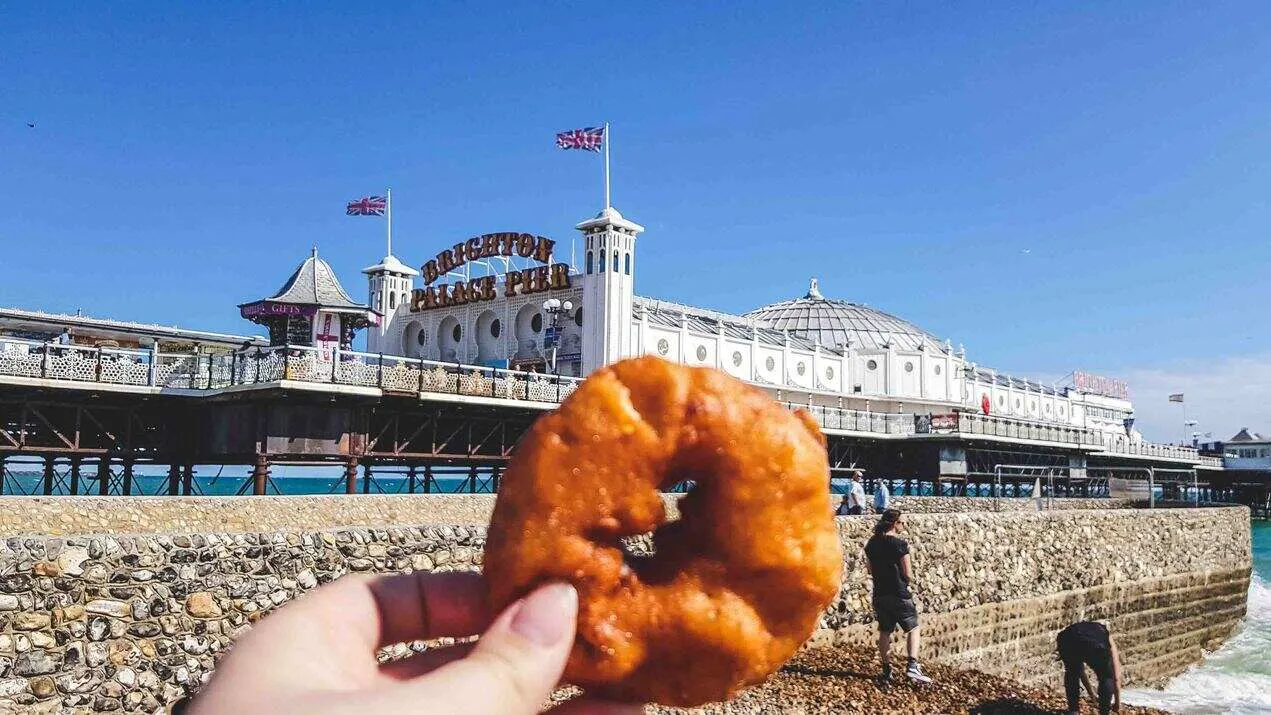
There are few things more quintessentially English than a day trip to the seaside. There’s no shortage of famous beaches and seafronts, though some of the more spectacular ones (such as those in Devon and Cornwall) are too far away for a day trip. Close to London, you’re best to head to Southend, Margate, or of course Brighton. Although you’ll find more sand in Southend or Margate (Brighton is a pebbled beach) – there’s a lot more to Brighton than simply heading to the beach.
Getting There
Brighton is on the same rail line as Gatwick Airport (obviously further away from London than Gatwick) – meaning that there is an abundance of direct trains, and they run regularly. The faster route is departing Victoria Station, but the Thameslink service goes via many suburban stations – so you may find that you’re able to pick up a train to Brighton close to home, rather than having to trek into central London to get one. If you are in central London, the Thameslink service typically runs via London Blackfriars (or some via St Pancras International).
Things to Do
Brighton is vegan foodie heaven… full disclosure: the main reason I go there is to eat! The city is regularly voted one of the most vegan-friendly cities in the UK (and even the world), so there is no shortage of vegan restaurants (as well as vegan-friendly restaurants) to enjoy.
Happy Maki is a vegan sushi bar, specialising in sushi burritos which are perfectly packed for a beachside snack. Or wait until you hit the beachfront itself and head to v360 for your fast food fix, followed up with some vegan whippy ice-cream!
For a proper sit-down meal head to Erpingham House, or for something a bit more laid-back, check out plant-based cafe Green Kitchen.
You may also be surprised to discover how many pubs in Brighton have a fully vegan kitchen, or host pop-ups within them. Tried and tested favourites include the Hope and Ruin – Beelzebab have long operated their fully vegan kitchen from within this iconic establishment, serving up vegan doners, hot dogs, loaded fries and more.
Or check out (although not fully vegan), vegetarian pub the Prince George which is only a short walk from the train station – making it the perfect place for a pub lunch, or as a final destination for a pint (or a few) before heading back to London. If you’re hungry, I recommend the loaded baked burrito! Opt for the pie and mash if your taste buds seek more traditional fare.
Of course there is much more to Brighton than just the food! It really is a great city to wander around. Be sure to spend a good chunk of time exploring Brighton Palace Pier – the biggest attraction in Southeast England.
A Grade II listed pleasure pier, it’s about as typically English as you can get – and offers a truly authentic experience in terms of what it has to offer, from the rides and amusements to the typical eats and drinks that you would expect from an old-fashioned fair (and of course many vegan options too)! If you are planning on doing a few rides, I would recommend getting a wristband as you will save a lot of money – and you can buy them 25% cheaper on the pleasure pier’s official website.
Also worth a look while you’re in town is the Royal Pavilion. Built as King George IV’s seaside pleasure home, it’s one of the most historic buildings in Brighton as well as probably also being the most exotic. A mix of Regency period grandeur, with strong influences from India and China, the Royal Pavilion is in the centre of town (towards the seafront, of course!) – so very easy to get to and see for yourself. You can purchase tickets to view the inside, which I would highly recommend, but it is also breathtaking from the outside… and access to the gardens is free.
Hampton Court Palace
Aside from St James’s Palace in London, Hampton Court Palace is the only surviving palace from the reign of King Henry VIII – and the only one of these two palaces that you can visit. Only 12 miles from central London, it is one of the easiest day trips that you can do from the capital.
Getting There
Direct trains run from London Waterloo to Hampton Court every half hour, with a journey time of 36 minutes. Cheap and cheerful, tickets are only £7.60 each way.
Things to Do
Building of Hampton Court Palace commenced in 1519, and the palace was initially intended for Cardinal Thomas Wolsey, a favourite of King Henry VIII. When Wolsey fell from favour (largely as a result of failing to negotiate an annulment for the king, who wanted rid of his first wife so that he could marry another) – the palace was handed back to Henry VIII, who then had it significantly extended. It ultimately became his favourite palace, and is the residence most associated with his reign.
Although often described as a Tudor palace, in fact much of the original palace was destroyed during the reign of King William III, who sought to rebuild something to rival the Palace of Versailles. However this work was not completed, leaving Hampton Court Palace an accidental mix of two styles – Tudor and Baroque.
Nonetheless, the palace remains firmly associated with the story of King Henry VIII and his six wives, and offers a true sense of both the Tudor period and more historic royal life – which is typically what most visitors to England are hoping for… as opposed to the more modern style, found inside the residences still used by the royal family today.
So, a visit inside the palace is a must. Tickets include access to the buildings, gardens and even a hedge maze! The maze was part of King William III’s work on the palace, and is the oldest surviving hedge maze in Britain. Also of interest are the royal tennis court (the oldest surviving real tennis court in England), and the world’s largest grape vine!
Personally I would recommend purchasing the full ticket, as the interior of the palace itself is a must-see… however, if you are only interested in the gardens and the maze, separate tickets for these are available on site (not online, where only the full ticket is available, costing around £19. It will only cost you a little less to miss the buildings).
Truly, this day trip is all about the palace, although there are some hiking trails in the area. The palace is also right on the River Thames, so there are plenty of nice spots for a riverside picnic. Alternatively, plenty of traditional pubs nearby!
Windsor Castle

While on the subject of royal palaces, Windsor Castle also makes a lovely day trip from London by train. The actual home of Her Majesty the Queen (she doesn’t actually live in London, she lives here!) and her favourite place to spend weekends, the 1,000 year old palace offers both a staggering amount of history and tradition, as well as a real sense of the day-to-day life of Britain’s modern working royal family.
The scene of many royal weddings, Windsor Castle has become particularly popular since the marriage of Prince Harry and Meghan Markle in St George’s Chapel – and even after stepping down from royal duties, the couple’s primary residence (Frogmore Cottage) is still within the castle estate.
Getting There
The fastest and easiest way to get from London to Windsor by train, is from Paddington Station – but note that there are no direct trains from London. Even though you will have to change trains, the total journey time will vary between 22 and 35 minutes! Too easy!
You’ll change to a Windsor and Eton Central train at Slough, and trains to Slough from London Paddington are incredibly frequent.
I would recommend setting out early for Windsor… like I say, it’s become an incredibly popular excursion from London since Harry and Meghan’s wedding. Thankfully both train journeys are relatively short, so it’s not a big issue if you can’t get a seat and have to stand. Be warned that the trains to Windsor and Eton are tiny though – usually only two carriages.
Things to Do
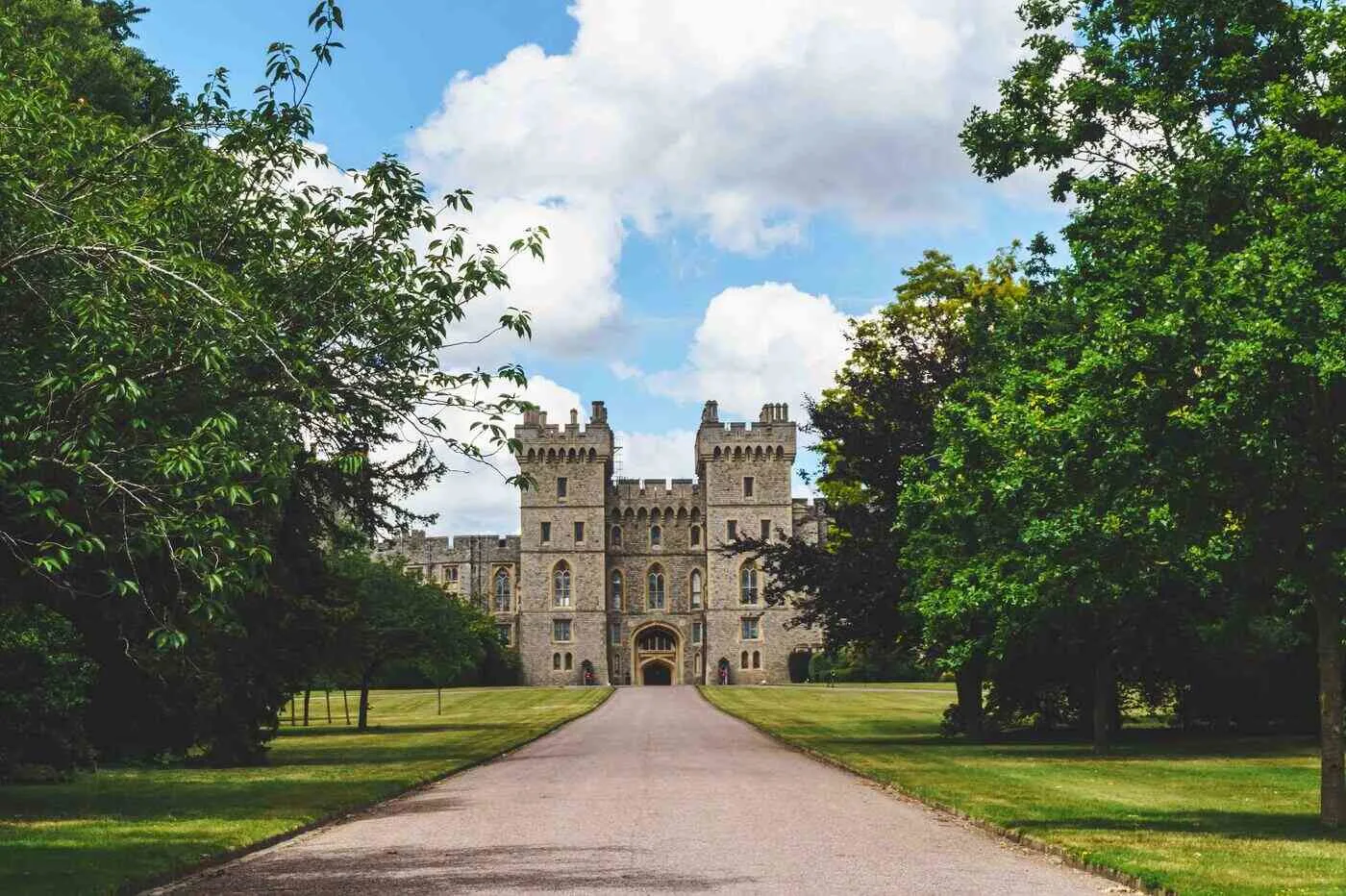
Another reason to set out early is to ensure that you catch the Changing the Guard ceremony at Windsor Castle – make sure that you choose a day that it’s actually happening! It’s not every day, but typically happens on Tuesdays, Thursdays and Saturdays at 11am. Schedules are subject to change, so always check online.
Do be aware though that the guard change can be cancelled last minute due to poor weather, or for other reasons, and you’re not always told why (if it’s short notice, the linked website is also unlikely to be updated). You’ll have a great day in Windsor regardless, even if the ceremony is cancelled unexpectedly.
Obviously the trains that arrive closer to the Changing the Guard ceremony start time tend to be busier, so try to get an earlier train to get ahead of the crowds.
You can actually catch a chunk of the ceremony from Windsor High Street itself – you don’t even need to pay for an admission ticket for the castle to do so. The band and guards march from Victoria Barracks on Sheet Street, up the High Street and into Windsor Castle. If you’re opting to watch them from the street, the best spots are on Windsor High Street itself, or on the Corn Exchange under Windsor Guildhall. Again, get there early to secure your spot. The march up the street takes about 10 minutes.
If you want to see that actual “changing” and full 30-minute ceremony that takes place in front of the castle, you will need to purchase an admission ticket – and allow extra time to actually get inside the grounds before the ceremony starts. Be sure to book your castle ticket in advance, online – and print at home.
Do allow at least 2-and-a-half (ideally 3) hours to visit Windsor Castle. It’s the oldest occupied castle in the world, and truly has so much to offer. The ticket price includes access to the magnificent State Apartments, Queen Mary’s doll’s house, the castle grounds, and St George’s Chapel. Not only did the chapel serve as Harry and Meghan’s wedding venue, 10 British monarchs are buried inside – including King Henry VIII. A free 30-minute Precinct tour is also included in the admission price.
After exploring the castle you will certainly have worked up an appetite. Although there are plenty of options for food in town, the castle’s cafe is definitely worth checking out before you leave. Situated in King Edward III’s medieval Undercroft, it is one of the oldest surviving spaces in Windsor Castle, and for centuries served as the castle’s wine cellar. The vegan chocolate cake is to die for!
For keen walkers, I’d recommend grabbing some food from the cafe and heading off along the Long Walk. From the castle gate to the Copper Horse (a statue of King George III) it’s around 2.7 miles, so be mindful of time, especially as a round trip. The Long Walk connects Windsor Castle with Snow Hill in Windsor Great Park, and is still used by royal carriages every year to get to the Ascot Races. Snow Hill makes a great spot for a picnic.
If you’re not up for the walk, a substantial lunch can be sourced from one of the town’s many pubs and restaurants. Windsor has become increasingly vegan-friendly, with most pubs having at least one decent option on the menu. Otherwise you’ll find the usual suspects such as The Real Greek, Giggling Squid, Wagamama, and others.
If time permits, spend the afternoon on a Thames river cruise. French Brothers offer either a 40-minute or 2-hour round trip. Alternatively, you can jump on the Windsor Duck, for a tour of both road and river!
Liverpool
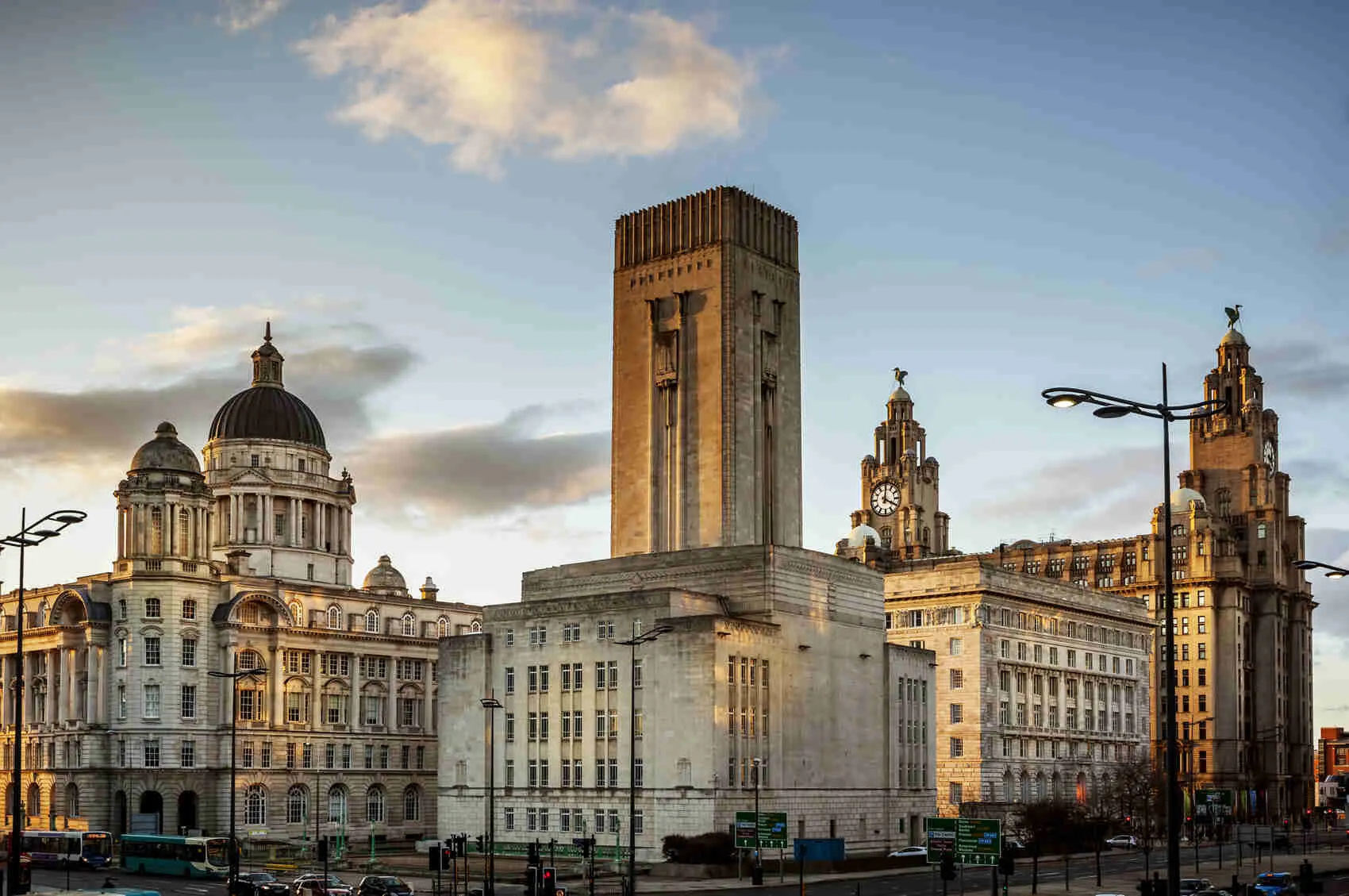
Just like Shakespeare’s birthplace, the Beatles’ hometown is a little bit further away from London than some of these other places, but still doable as a day trip and absolutely worthwhile. More than just music and football, Liverpool was the main trade and migration port at the height of the British Empire, and famously nicknamed “the world in one city”.
Getting There
Direct trains run regularly from London Euston to Liverpool Lime Street, and are even more frequent if you’re happy with one change. The average journey time is 2 hours and 30 minutes.
Things to Do
The best way to easily cover much of the history and key sights of Liverpool over a period of about three hours, is by taking the “free” (tips-based) walking tour with Sandemans. Try to catch the 11am tour if you can. Although the tour does include some of the key Beatles sights and stories, if the band is the main reason for your visit, you may wish to check out Sandemans’ more in-depth Beatles to the Blitz tour, departing at 3pm.
Although the original Cavern Club that launched the fab four was demolished in 1973, it was authentically rebuilt on Mathew Street and remains an important venue today. A place of pilgrimage not only for Beatles fans but for musicians generally, it is arguably the most famous club in the world, and no visit to Liverpool is complete without stopping by. There will likely be a gig on while you’re in town, and in my opinion this is the best way to experience The Cavern. Alternatively, tours are also available.
But an absolute must for Beatles fans is a visit to The Beatles Story. More than just a museum, the exhibition is a truly immersive experience.
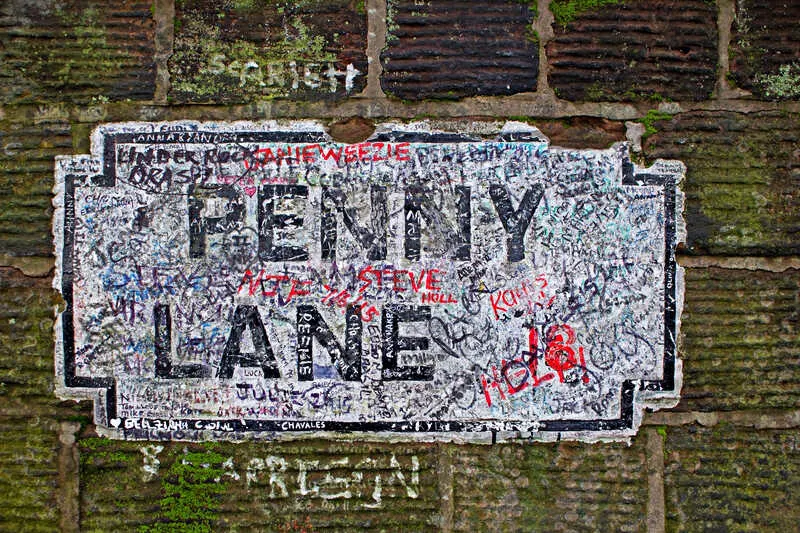
Away from the Beatles, you should head to Royal Albert Dock, the vibrant heart of Liverpool’s historic waterfront, to soak up the atmosphere and meet some friendly locals. The Victorian dock comprises of the country’s largest group of Grade I listed buildings, and is home to a number of independent shops, as well as museums and galleries if you’re looking to get your cultural fix. There’s also an abundance of places to eat and drink.
The city is famous for its architecture, much of which was influenced by its development into a major port of the British Empire. English Heritage has described Liverpool as England’s finest Victorian city, and you’ll certainly get a sense of this from Albert Dock. But the city is really a mix of architectural styles, spanning a period of about 300 years – and it’s certainly worth checking out some of the more modern buildings. A personal favourite is the Metropolitan Cathedral, nicknamed “Paddy’s Wigwam”. Built in the 1960s, it’s a curious mix of modern architecture, Gothic Revival, and rock ‘n roll!
Football fans should definitely head to Anfield, the home of Liverpool Football Club. A stadium tour is an absolute must-do for anyone who loves “the beautiful game”, and although not located in the city itself, there are loads of local buses that will get you there easily.
Dover
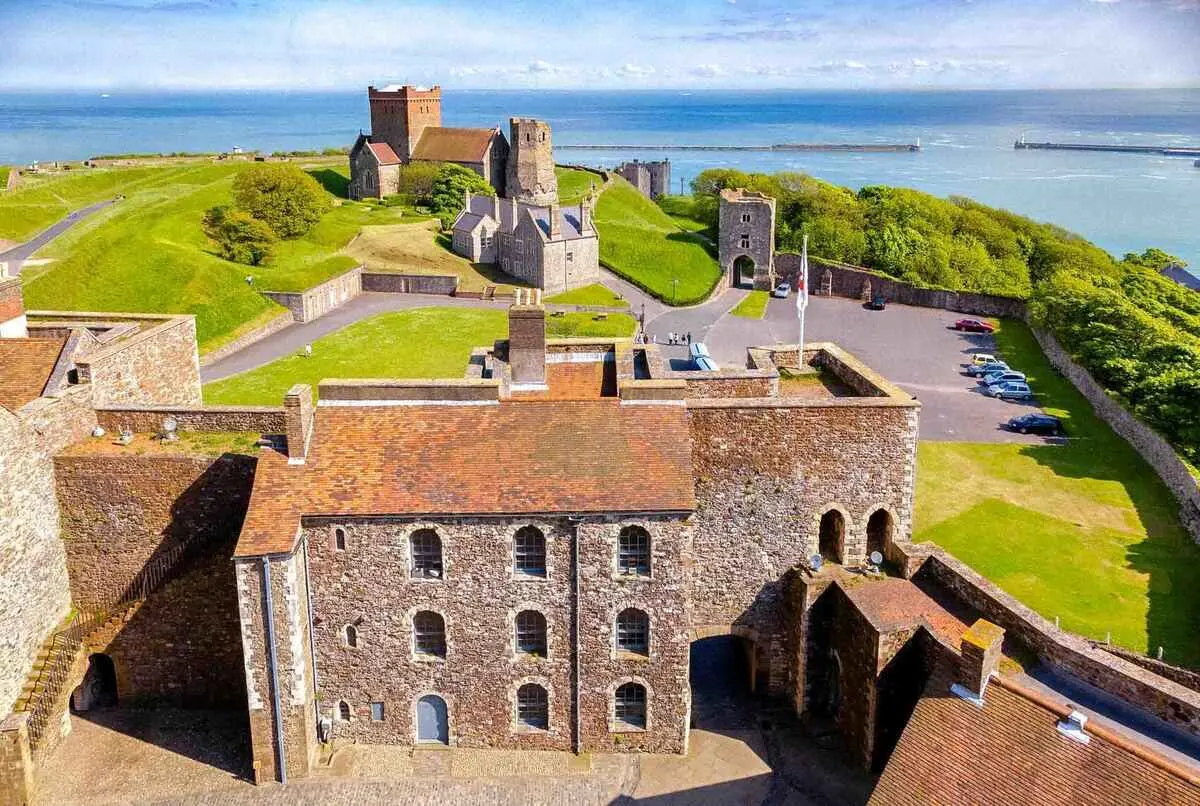
Known as the Gateway to England, for centuries Dover has been the first point of contact for countless travellers entering Britain, and the iconic White Cliffs have been the last glimpse of the country for those crossing the English Channel. Before you decide to leave England behind and jump on a ferry to France, stick around to see what makes this famous port a perfect day-tripper’s destination.
Getting There
There are trains that run from London St Pancras International to Dover Priory every hour with Southeastern – and this is the train that you’ll want to get. You’ll see other trains going to Dover as well, but these are much slower. The high-speed Southeastern service will only cost you a few pounds more, and you’ll get there in half the time! The journey should take just over an hour.
Things to Do
Dover has “Walkers are Welcome” status, and yes – this does mean that you can walk the famous White Cliffs themselves. I’d recommend you make this the first thing you do upon arrival.
The White Cliffs hold huge cultural significance for Britain, and are a national symbol of freedom and hope. They’ve played a huge rule in the shaping of English history since the arrival of Julius Caesar in 55AD, and have been linked to wars and invasions ever since.
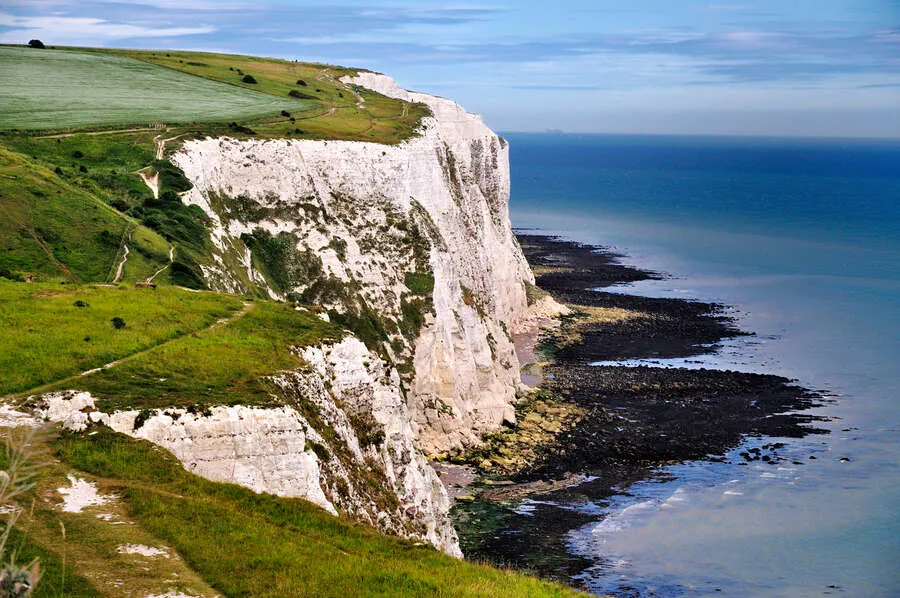
It takes most people around 40 minutes to walk to the top of the cliffs from the town centre. It’s a beautifully scenic walk, with spectacular views of both the ocean and Dover Castle. You’ll know you’ve reached the top (and where the actual cliff walk begins, haha), when you spot the White Cliffs of Dover Visitor Centre. I recommend a brief stop here to both catch your breath, and also maybe grab a snack and a drink.
The walk along the cliffs boasts incredible views, and on a very clear day, it is sometimes possible to even glimpse France. The full walk is about 2 miles, and the end of it you will find the South Foreland Lighthouse. The current lighthouse is Victorian, but there have been various lighthouses on the site since the 14th Century. The former lighthouse keeper’s cottage now houses Mrs Knott’s Tearoom, where you can stop for some food and a cup of tea, surrounded by 1950s decor. I wouldn’t recommend lingering too long here, as there is much more to see!
It is possible to see both the White Cliffs and Dover Castle in the same day, as they are quite close to each other. I’d recommend refuelling with lunch, and then not wasting any time getting to the castle – as there really is enough to see there to spend a whole day at the castle itself!
If you fancy a pub lunch, there is no place more suitable than the historic White Horse Inn. Situated in the ruins of Norman Church, the building dates back to 1365! The cellar at this time was used as the town morgue! This award-winning pub has great vegan options too, but if you think you’ll be tempted to linger there, you may wish to visit the castle first (which closes at 5pm) and then hit up the White Horse for an early dinner instead.
Dover Castle boasts more than 2,000 years of history, and I have to say it is probably one of the best castles I have visited anywhere in the world. From the Great Tower of the Royal Court of King Henry II, you can also immerse yourself in the incredible history of the Second World War, including visiting the underground hospital that treated injured troops. There are also tours of the secret wartime tunnels that were used from Napoleonic times, up to as recently as the Cold War.
Bristol
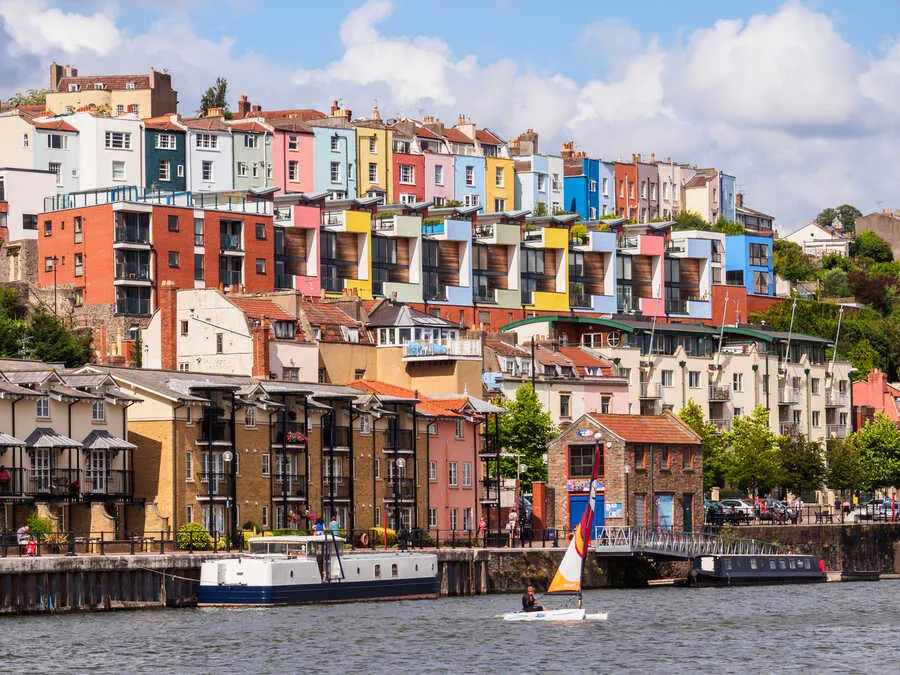
From its importance in maritime history, to Banksy – Bristol is a vibrant city that is so much more than a student town. Spilling with culture and not afraid to confront and address its oftentimes dark history – including associations with the slave trade – it’s a fiercely diverse and dynamic city, full of life and energy.
Getting There
Direct trains run hourly from London Paddington to Bristol Temple Meads. The total journey time is around 1 hour 40 minutes.
Things to Do
Being a student town, Bristol unsurprisingly has a great “free” (tips-based) walking tour. Spend a couple of hours with a local who will tell you the stories of the city, as well as show you all of the major sights including the great Clifton Suspension Bridge, Bristol Cathedral, the SS Great Britain, some of Banksy’s graffiti art, and more. The tour will finish down by the harbour, from where you will be able to head directly to just about anything of interest.
If you are a big Banksy fan, you’ll definitely want to spend some time seeing his many artworks and murals in the city. Born in Bristol in 1974, the city has always been one of his main canvases, and is home to some of his most famous pieces. Visit Bristol have listed some of his most important artworks on their website in order to allow you to do a self-guided walk; there’s even the Banksy Bristol Trail map you can download.
Hit up the old town and walk through St Nicholas Market, weaving your way through quirky stalls and street food in a Georgian arcade. Then head over to the Christmas Steps, a historic street dating back to the 17th century – flanked with cafes and antique shops.
If the steps weren’t too strenuous for you, climb Cabot Tower for a fabulous free view of the city. Another fun thing to do is head to the university campus to experience the mirror maze in Royal Fort Gardens.
M Shed is a museum all about Bristol and its people, and again – it’s free. Housed in a 1950s dockside transit shed, it is an interesting building in its own right. Immerse yourself in all aspects of Bristol’s history, from its settlement right up to the modern day, and learn about the events and controversies that have helped shaped the city to what it is today.
Bristol has played a key role in the aviation technology, and co-led the development of Concorde. A visit to Aerospace Bristol will take you on a supersonic journey through the history of British Concorde, as well as give you the opportunity to actually board the last Concorde to ever fly – the Alpha Foxtrot – although you won’t be flying anywhere! The museum is located out at the Filton Airfield, where every British Concorde made her maiden flight. There are local buses that will take you there, although it is a half-mile walk from the bus stop to the museum.
In 2019 Bristol was dubbed the “best vegan city in the world” – this is obviously up for debate, but unsurprisingly there is no shortage of incredible vegan restaurants to grab a bite to eat. I always find myself heading back to Vx, which incidentally was named the third best vegan restaurant in the entire world, haha. Specialising in vegan junk food, the chain first opened in Kings Cross, but don’t be fooled – the Bristol joint is far superior to its older London sibling.
These are just some of the many incredible places you can do as a day trip from London by train. So get out there and see England – it really has so much to offer.

Kat
Hi, I'm Kat, an Australian that moved to London in 2013 to start a new adventure. What a roller-coaster that was! I love helping others move to the UK and people explore the world! I’d be honoured if you’d say, “Thanks!” with a £3 coffee on Ko-fi.

